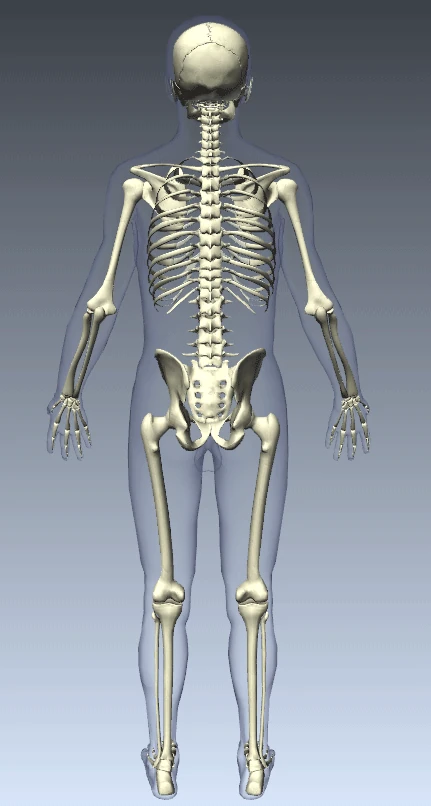Below is a description of a pure Ascending Postural Distortional Pattern resulting from abnormal foot mechanics (pronation). The research publications describing this pattern are cited at the end of this blog.[]

Posterior View of the Pure Ascending Postural Distortional Pattern resulting from abnormal foot pronation
Abnormal foot pronation Right > Left
- Right innominate more anteriorly rotated than left innominate. The right leg functions short.
- Standing, the pelvis drops (unlevels/pelvic obliquity) to the right
- The left shoulder drops downward relative to the right shoulder
- The head tilts to the right

Oblique View of a Pure Ascending Postural Distortional Pattern initiated by abnormal foot pronation
Abnormal foot pronation - Left > Right
- Left Innominate Anteriorly Rotated
- Left Temporal Bone Posteriorly Rotated
- Sphenoid Bone Flexed (Anteriorly Rotated) and Side Bent Left (Left Sphenoid Torsion)
The most common abnormal foot structures initiated these ascending postural distortional patterns are:
- PreClinical Clubfoot Deformity
- Primus Metatarsus Supinatus Foot Structure (aka Rothbarts Foot)
References
Rothbart BA 2013. Prescriptive Insoles and Dental Orthotics Change the Frontal Plane Position of the Atlas (C1), Mastoid, Malar, Temporal and Sphenoid Bones: A Preliminary Study. Journal of Cranio Manidibular and Sleep Practice, Vol 31(4):300-308.
Rothbart BA 2014. Malocclusion and Abnormal Foot Motion.Cranio UK (Journal of the British Society for the Study of Craniomandibular Disorders), Issue No. 1, pp 26-29.
Rothbart BA 2008. Vertical Facial Dimensions Linked to Abnormal Foot Motion. Journal American Podiatric Medical Association, 98(3):01-08, May.
[Rated as the strongest published research paper (between 2000-2008) linking stomatognathic system to global musculoskeletal changes.
Knighton K 2010. Narrative Review: Exploration of global cause and effect of temporomandibular joint dysfunction British School of Osteopathy, Research Paper. Online Last accessed December 28, 2013.]